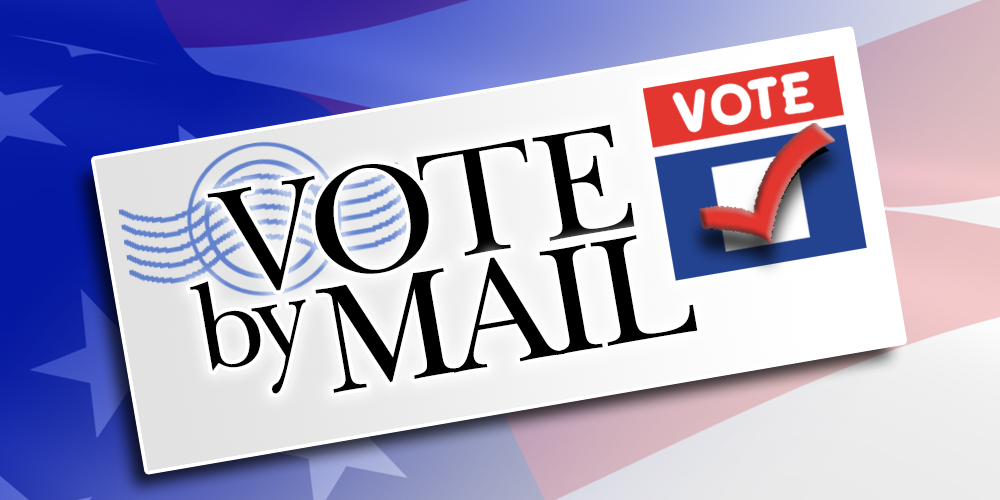It’s a trickle and not a flood so far, but I suspect that will change as we get closer to Novemner.
The legal status of mail-in voting for virus-related reasons has gone back and forth — earlier this month, one court gave the green light only to be overturned by another court less than 24 hours later. Nevertheless, a considerable number of voters have turned in early requests for mail ballots, a Hearst Newspapers analysis shows.
In Harris County, the number of accepted mail-in ballot requests has risen from about 2.4 percent of registered voters in 2016, or 51,451 voters, to 3.2 percent of voters, or 76,267 voters, so far this year. Most were annual applications and were not limited to a single election.
Requests from Harris County voters age 65 or older, who are guaranteed a mail-in ballot in Texas, continue to represent the vast majority of applications — more than 90 percent. Requests for ballots on the basis of a disability totaled 1,429 — 0.06 percent of registered voters, compared to 0.04 percent in 2016.
Bexar County has similarly seen a slight increase in mail-in ballot requests compared with 2016. They’ve risen from about 1.6 percent to 2.2 percent of registered voters, or 24,477 total. Voters 65 or older accounted for most of the increase.
Texas’ primary runoff is scheduled for July 14. The deadline to apply to vote by mail is July 2, some five weeks away. (Applications must be received by that date, not simply postmarked.)
Bob Stein, a Rice University political science professor who studies elections, said the initial numbers point to a significant shift toward mail balloting.
“It’s historically high,” Stein said. “For the fall, the data tells me that if the conditions today remain unchanged or worsen … the consequence is that more people will try to vote by mail, try to avoid contracting the virus by voting in person early or they won’t vote at all.
“But there’s no doubt in my mind that the share of the vote cast by mail will go up, and it will go up dramatically.”
Depending on how the courts rule, Stein said the number of mail-in ballots cast in Texas could increase anywhere from 15 to 100 percent or more in the Nov. 3 general election.
Let’s add some clarity to the math in the second and third paragraphs. First, the numbers cited for early voting are for the primaries. There were 124K absentee ballots mailed for the November 2016 election, and 120K absentee ballots mailed for November 2018. There were something like 833 mail ballots requested due to disability for the 2016 primary – we don’t know what the comparable figure for November was – which is needless to say a tiny figure in the grand scheme of things. The 1,429 disability ballots requested so far – it would be super nice to know how many have been requested for the Dem primary runoff and how many for the Republican primary runoff by the way, since this is a thing we can know – is way less than ten percent of the total mail ballots, more like 1.8%. If we take Bob Stein’s high end estimate for November, we could be looking at 250K ballot requests, with maybe up to five thousand of them being from people claiming a disability. Sure seems like a little bitty thing for the Republicans to be freaking out so much about.
Of course, we don’t have any idea how this will go. Maybe a huge number of people will request mail ballots if the federal courts ultimately rule in favor of the plaintiffs. Maybe more people than you might think prefer to vote in person, or just don’t want to try something new in such a consequential election when it’s the first time it’s been done and the chances of human error causing havoc are higher than usual. Maybe people will feel safer voting in person in November, or maybe we’ll have had a second spike and people will be even more scared of doing anything outside the house than they are now. The point I would make at this time is yes, more people are requesting mail ballots, at least in the biggest counties. The vast overwhelming majority of those making that request are people 65 and older, who have always had that legal right. Even with this increase, the mail ballot universe represents a small fraction of all registered voters – we’re talking maybe ten percent of registered voters if we assume the Bob Stein maximal figure, which in turn may be something like 15-20% of total turnout for November. Not nothing, but not earth-shattering either. Ask me again in October and maybe my answer changes, but for now it’s significant but still small, and nothing the system shouldn’t be able to handle.

